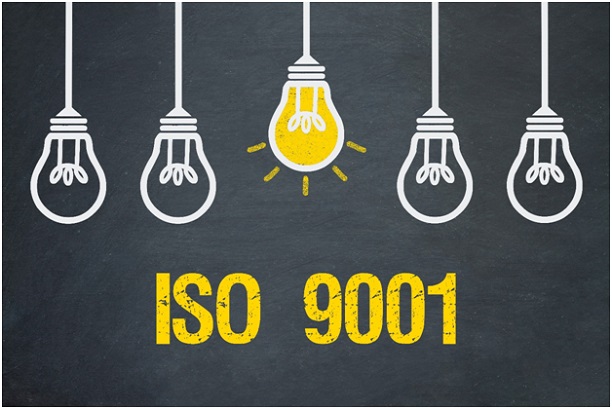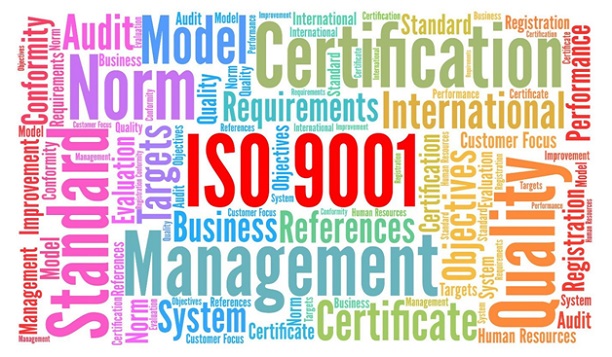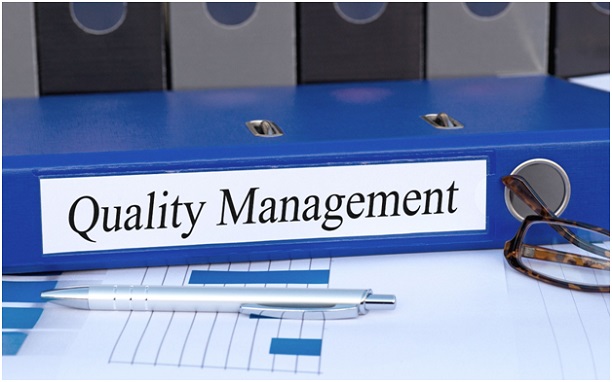A Quality Management System (QMS) refers to the sets of policies, procedures and other records that serves as a guide as to how a company delivers products and services.
In other words, it is a sort of internal manual of how quality is maintained within the company and with its output. The QMS is an entire system that is defined by documents that illustrate and report the policies and procedures that promote quality of a company’s product and/or service.
A company’s quality management system illustrates its systems for planning and executing its projects; this includes how to improve customer satisfaction.
In general, Quality Management Systems aim to set standards of practice within a company. By doing this, a company hopes to be able to formalize and document how they are able to produce their products and services. Beyond the outputs of the company, the QMS also details the training that is needed for the continuous growth and improvement of employees through trainings.
Employees play an integral role in the how an organization works, so it is important to ensure their professional growth within the organization.
Each company may have a different QMS because of the nature of the business and how it is run.
While most (in not all) companies aim to produce quality products and services, the quality management system of each company may look different from another company’s quality management.
Applying for the ISO 9001:2015 certification “legitimizes” the procedures and practices stated in a company’s quality management system. A company that receives the ISO certification means that the company is compliant with the requirements.
Our QMS templates helped many businesses achieve certification in 2023, why not yours in 2024?

Just like the process that was outlined for design and development, the customer satisfaction procedure gives companies a guideline for how they can make sure their customers are happy with the service and products they are receiving. This also includes close monitoring and a lot of documentation for efficiency.
For ISO 9001 certification, all companies must have possession of a quality manual, quality policy, quality objectives, quality records, as well as six more specific procedures. These procedures are control of documents, control of records, internal audit, control of nonconforming product, corrective action, and preventative action.
John Walter is currently the head of the International organization for Standardization, or ISO for short. From the years 2014 to 2016, he was the Vice-president of the ISO policy, until he was elected as the president of the organization in 2017.
An ISO certified company is defined as an organization that is complaint with the regulations of ISO 9001 standards. In addition to just following these guidelines, business that are certified with ISO go through an auditing and approval process to make sure that they are in line with the quality standards that have been put into place.

The abbreviation ISO stands for the International organization for Standardization, which means that the standards are set for countries all around the world. In the current year, there are a total of 164 countries that are members of the ISO, certified and compliant with the quality guidelines that have been put into place.
In the most recent and up to date version of ISO 9001:2015 there is a total of 10 clauses. However, only clauses 4-10 are required in order to be considered compliant. In the previous version of ISO 9001:2008, there were only 8 clauses in the entire document, with clauses 4-8 being mandatory for certification.
The final step in registration leading up to the granting of certification is an external Certification Audit to confirm that the operational standards of the company are active and effective.
ISO certification is not actually provided by the ISO themselves. They simply create the international standards for all companies to choose to become compliant with.
The certification process must be performed and granted by a third party, since ISO does not issue certificates at all.
Check the contract with the Client, they may well specify how long to retain project records. Generally, retain commcerical and contractual documents (or document that show the contract was completed to requirements) for up to ten years depending upon your defect liability period.
Check the contract with the Client, they may well specify how long to retain project records, maybe refer the query to your Contracts/Commcercial Manager.
Process Monitoring Records are those records which atest to ongoing inspections for construction works and the processes used to complete the works, e.g. daily site inspections, test reports, electrical wiring tests, certificates of conformity for materials, material inspections, audit reports, commission test reports and records, etc.
Legal & Compliance Records refer to documents that are required by law, e.g. method statements to comply with H&S requirements, evidence of complying with planning and environmental restrictions.
Information to support the operations of QMS processes might include Audit Reports, Corrective Reports, Nonconformity/defect reports, management review records, inspections and monitoring records. Use the Clause reference in the table to relate the document back to what the standard requires.
Information to support the operation of QMS processes – you should be maintain – keeping the information live and accurate like a risk-register, and then retaining the risk-register at the end of the project to evidence how risk were dealt with.
Knowledge exists in skilled workers, more senior colleagues should be encouraged transfer their knowledge and skills to other workers in order improve their skills.
Find out what other construction companies are doing and measure your QMS performance against theirs, get ideas for improvement from sharing knowledge with others.

You should evaluate the performance and effectiveness of the QMS by internal auditing, reviewing performance indicators and taking corrective action when performance reduces.
Under ISO 9001 guidelines, there are requirements for almost everything that goes on within a business, including the products that are designed and developed. A nonconforming product is one that does not meet one or more of the ISO regulations. In this case, the product must be identified and stopped before distribution.
A minor non-conformance can include a misstep that broke a company policy or procedure, rather than directly failing to meet ISO requirements.
The term document control in ISO 9001 refers to the control of documented information that is required by the standards and guidelines. Along with putting these standards in place, the documents themselves should be controlled to fit the specified requirements. This procedure must also be documented according to ISO 9001.
A quality management system (QMS) is a system that helps an organization to document the operations and procedures that go on within the business. The specific documents that describe the QMS system serve the purpose of identifying how the system works and what it does.
A Quality management system (QMS), such as ISO 9001, is a compilation of specific business procedures and processes that help an organization to meet the needs of their customers and ensure that they are satisfied. With very tight guidelines, quality management systems essentially keep a business in line with quality standards.
An ISO inspection takes place in order to evaluate the current standing of certified companies. These inspections can include examining materials, observing products, testing installations, going over processes and procedures that are in place, as well as checking services and making sure they meet all requirements.
The ISO 9001 standards lay out a set of regulations and guidelines that will assist businesses in staying on the right path to meet their physical and financial goals. With consistent and quality audits of internal operations and other functions of the company, the standards keep a business on their toes and helps them to be the best they can be.
A quality management system, or QMS, serves the purpose of making sure that customer requirements are met on a consistent basis. The QMS is essentially a combination of processes within the business that assist them in boosting the satisfaction of their customer base overall, all while helping them fulfill their purpose.
ISO 9000 is a set of guidelines for managing quality in a business. ISO 9001, on the other hand, is a collection of regulations that comes from ISO 9000, and is essentially a branch off of the original standards. ISO 9000 standard itself also includes an additional standard that provides terms for quality management systems.
Learn more - difference between ISO 9000 and ISO9001.
The different types of ISO certifications include ISO 9000, which is the most common certification in this category, as well as ISO 9001, ISO 13485, ISO 14001, ISO 45001, AS9100, IATF16949, and lean manufacturing. Additionally, all of these certifications fall under their own specific category as far as what the standards and regulations entail.
Since there have been so many versions of ISO standards over the years, it is important to stay up to date with the most recent regulations that are relevant during the given time period. As of now, the current ISO 9001 standard is ISO 9001:2015, with the newest version of this standard being released in September 2015.
To get ISO 9001 certification, you will need to prepare your company to implement the ISO requirements. The rest of the process will include documenting the quality management system and going through an external audit before certification is granted.
Depending on the size and complexity of the business, this can take anywhere from 3 months to a year.
Updated: 11th April 2022
Author: Richard Keen

Richard is our Compliance Director, responsible for content & product development.
But most importantly he is ISO's biggest fanboy and a true evangelist of the standards.
Learn more about Richard

Don’t Try to Manage It All Alone!
Our ISO Auditors and Quality Manager Trainers have been in this industry for years, and since 2002 we’ve been providing thousands of small businesses and large corporations with the tools they need to get certified.
Instead of trying to create everything you need to follow this process from scratch, use ours. We have procedures, templates, checklists, process maps, forms and gap analysis tools to help your documentation without missing a single input or output.
Before you invest all the hours reinventing the wheel, before you spend countless dollars outsourcing the task — try our templates.